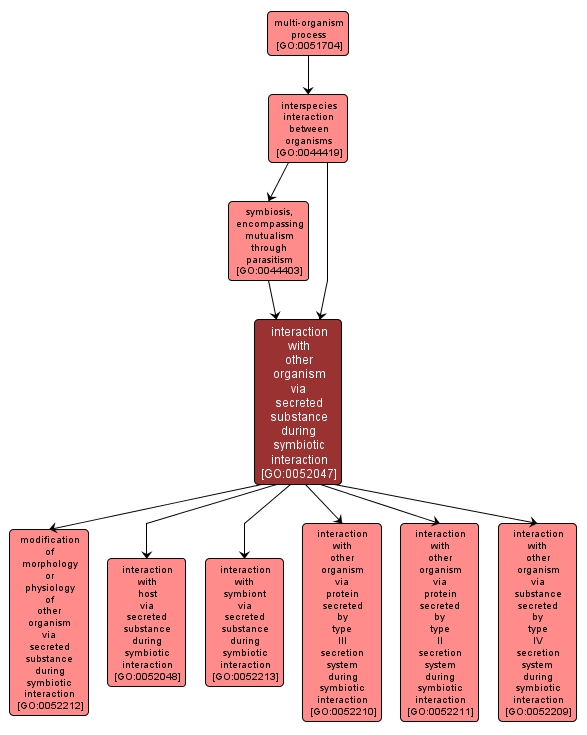GO TERM SUMMARY
|
| Name: |
interaction with other organism via secreted substance during symbiotic interaction |
| Acc: |
GO:0052047 |
| Aspect: |
Biological Process |
| Desc: |
An interaction with a second organism mediated by a substance secreted by the first organism, where the two organisms are in a symbiotic interaction. |
|

|
INTERACTIVE GO GRAPH
|














